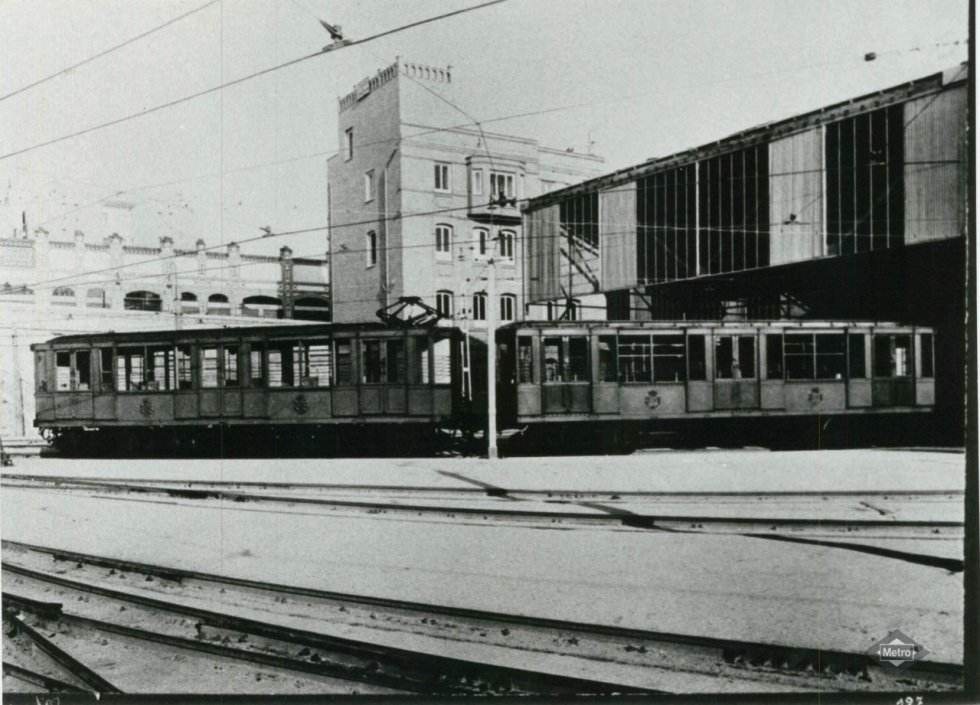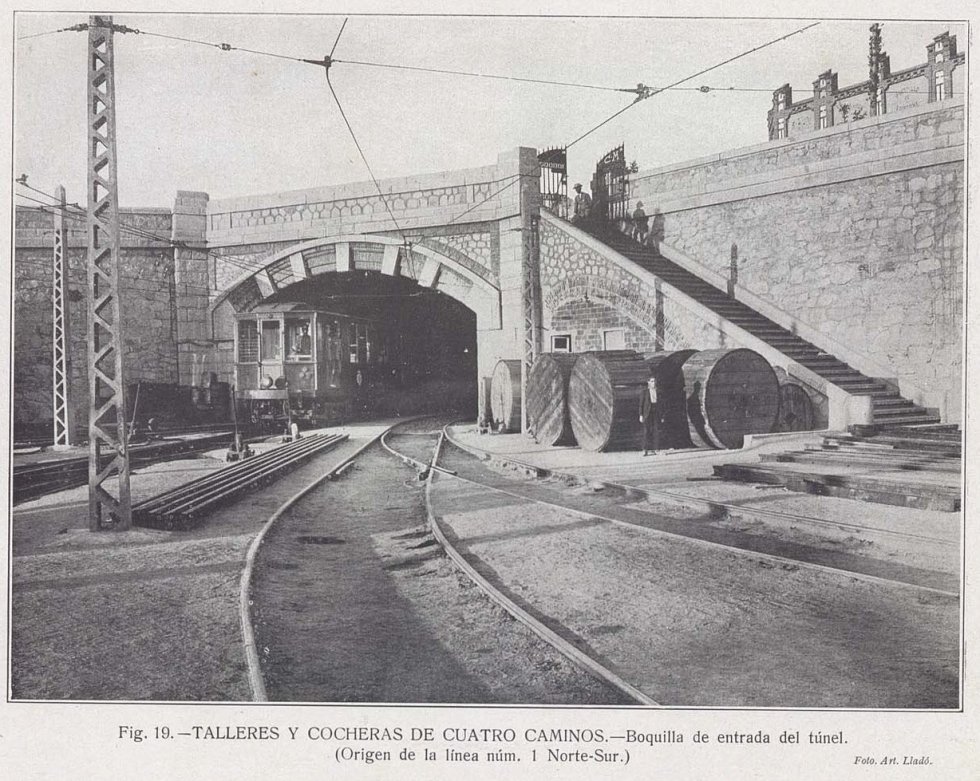We cannot talk about this project without first mentioning its creator, Antonio Palacios Ramilo. This figure is well known among those inhabitants of Madrid who enjoy such emblematic buildings as the Casino de Madrid, the Edificio de las Cariátides (the former Banco Español del Río de la Plata), the Círculo de Bellas Artes or the well-known Ayuntamiento (Former Palacio de las Telecomunicaciones). Our protagonist is responsible of these iconic projects, but he is also a character who played a fundamental role in the development and creation of Metro de Madrid as we know it today.
The father of an infrastructure
Antonio Palacios, together with Otamendi, Mendoza, González Echarte and Moreno, was responsible for shaping this infrastructure. His collaboration with Metro de Madrid led him to work on lines 1, 2, 3 and 4, and although his work included all the stations – platforms, vestibules, corridors and entrances – or the creation of the company’s brand image, little has come to our days due to the transformations that have taken place over time. As part of his legacy, we received the accesses to the Noviciado, Cuatro Caminos and Tirso de Molina stations, which still preserve the original wrought iron and granite decoration. This last station also recovered the ornamental motifs and the wall tiling, giving back an atmosphere similar to that breathed in its first years of life.
A time capsule has also arrived to our days, which is the Chamberí station, known as “the ghost station”. It is a station that became unused in 1966, which is why it keeps most of its elements intact. We can enjoy the original materials, the signage, or the curious advertising of the time. Through “Andén 0“, Metro de Madrid manages this jewel frozen in time together with the important Pacífico Motors Building. Both buildings are developing a project for an interpretation centre in which the role of this architect is made known, along with the history and way of functioning of this public transport system. –And we recommend you to visit these spaces, as well as being very interesting its entrance is free!–

Chronicle of a death?
Part of the legacy that has reached us includes one of the auxiliary works carried out by Antonio Palacios for Metro de Madrid: Cuatro Caminos depot. This is a building of vital importance, as these are the first garages and workshops that appeared for a metro in our country. Observing their urban context, one reads a growth of the city where these depots ended up being besieged by the urban plot and the new construction, forming a barrier in the district of Cuatro Caminos.
The alarms of the people of this neighborhood jump when in 2014 the demolition of the disused workshops of Valderribas Street, in front of the Motors Building, is carried out. This action, together with the sale that same year of the Cuatro Caminos garages to a cooperative real estate group makes the neighbors get up to try to protect this seed from which this transport is born.
During the next 4 years we see how the integrity of this project of 1919 is endangered. The real estate group intends to eliminate these buildings that are part of the Spanish Industrial Heritage to build a large park with a tower of 31 floors that has up to 443 houses. Two groups ended up appearing totally at odds. The first seeks an economic benefit from the realization of a speculative project. The second, recognising the value of Palacios’ work, wants to protect it.
As we observe whether these garages will enjoy a long life after their centenary in 2019, we wonder whether the city should listen to those who come from outside with a purely speculative interest, or to those who seek to maintain part of its history and identity. We wonder if there are no other alternatives –not necessarily cultural– that can allow the mutation and endurance in time of these garages. Let us imagine the possibilities that these witnesses of history can give in fields such as the tertiary sector, or in a development of special housing thought from the coexistence and respect with the pre-existence. That it is fond of it and takes care of it.
It is not up to us to give the answer, although we will not stop asking these questions.
